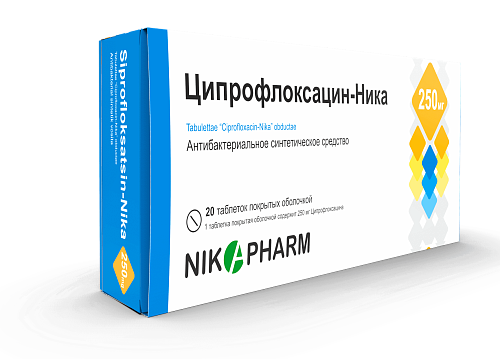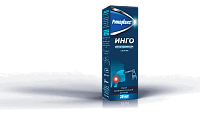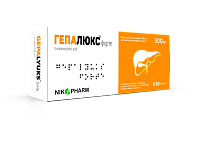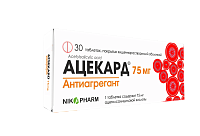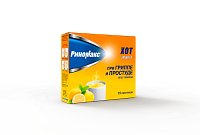Indications for use
Infections and inflammatory diseases caused by ciprofloxacin-sensitive microorganisms.
For adult patients:
- Respiratory tract infections. Ciprofloxacin is recommended for pneumonias caused by Klebsiella spp., Enterobacter spp., Proteus spp., Escherichia coli, Pseudomonas aeruginosa, Haemophilus spp., Moraxella catarrhalis, Legionella spp. and staphylococci;
- infections of the middle ear (otitis media), sinuses (sinusitis), especially if these infections are caused by gram-negative microorganisms, including Pseudomonas aeruginosa or staphylococci;
- kidney and urinary tract infections;
- genital infections, including adnexitis, gonorrhea, and prostatitis;
- eye infections;
- digestive system (bacterial infections of the gastrointestinal tract, including mouth, teeth, jaw, peritonitis), gallbladder and biliary tract;
- Infections of the skin, mucous membranes and soft tissues;
- sepsis;
- infections of the musculoskeletal system;
- prevention of invasive infections caused by Neisseria meningitidis.
- Infections of the abdominal cavity;
- prophylaxis and treatment of infections in immunocompromised patients (during therapy with immunosuppressants)
- prevention and treatment of inhalational anthrax (infection with Bacillus anthracis).
Pediatric applications
Treatment of complications caused by Pseudomonas aeruginosa in children with pulmonary fibrosis from 5 to 17 years of age;For adult patients:
- Respiratory tract infections. Ciprofloxacin is recommended for pneumonias caused by Klebsiella spp., Enterobacter spp., Proteus spp., Escherichia coli, Pseudomonas aeruginosa, Haemophilus spp., Moraxella catarrhalis, Legionella spp. and staphylococci;
- infections of the middle ear (otitis media), sinuses (sinusitis), especially if these infections are caused by gram-negative microorganisms, including Pseudomonas aeruginosa or staphylococci;
- kidney and urinary tract infections;
- genital infections, including adnexitis, gonorrhea, and prostatitis;
- eye infections;
- digestive system (bacterial infections of the gastrointestinal tract, including mouth, teeth, jaw, peritonitis), gallbladder and biliary tract;
- Infections of the skin, mucous membranes and soft tissues;
- sepsis;
- infections of the musculoskeletal system;
- prevention of invasive infections caused by Neisseria meningitidis.
- Infections of the abdominal cavity;
- prophylaxis and treatment of infections in immunocompromised patients (during therapy with immunosuppressants)
- prevention and treatment of inhalational anthrax (infection with Bacillus anthracis).
Pediatric applications
Prevention and treatment of inhalational anthrax (Bacillus anthracis infection).
The use of ciprofloxacin in children should only be initiated after a benefit/risk assessment due to possible side effects on joints and periarticular tissues!
Information on correct use
Method of administration and dosage
Oral tablets. Tablets should be swallowed whole with a little liquid after a meal. The active substance is absorbed more quickly when the tablet is taken on an empty stomach.Administration of the drug should be started immediately after suspected or confirmed infection.
The dose of ciprofloxacin and duration of treatment depends on the severity of the disease, type of infection, age, weight of the patient and renal function.
Adults:
For mild to moderate lower respiratory tract infections, 500 mg 2 times daily.
Course of treatment: 7-14 days.
Particularly severe life-threatening infections (streptococcal pneumonia, recurrent infections in pulmonary fibrosis, bone and joint infections, septicemia, peritonitis) - 750 mg 2 times a day.
In acute sinusitis - 500 mg 2 times a day.
Course of treatment: 10 days.
In infections of skin and soft tissues of mild to moderate degree - 500 mg 2 times a day.
Course of treatment: 7-14 days.
In infections of bones and joints (mild and moderate degree) - 500 mg 2 times a day.
Course of treatment: up to 4-6 weeks.
In infections of the urinary tract - 500 mg 2 times a day.
Course of treatment: 7-14 days, with uncomplicated cystitis in women - 3 days.
In chronic bacterial prostatitis - 500 mg 2 times a day.
Course of treatment: 28 days.
In uncomplicated gonorrhea - 500 mg once.
In typhoid fever - 500 mg 2 times a day.
Course of treatment: 10 days.
In infectious diarrhea - 500 mg 2 times a day.
Course of treatment: 5-7 days.
In complicated intra-abdominal infections - 500 mg every 12 hours
Course of treatment: 7-14 days.
Other infections - 500 mg 2 times a day.
For prophylaxis and treatment of inhalational anthrax - 500 mg 2 times a day.
Course of treatment: 60 days.
Children:
For treatment of complications caused by Pseudomonas aeruginosa in children with pulmonary fibrosis from 5 to 17 years - 20 mg/kg 2 times a day (maximum dose 1500 mg).
Duration of treatment is 10-14 days.
In inhalational anthrax (prophylaxis and treatment) - 15 mg/kg 2 times a day. The maximum single dose is 500 mg.
The maximum daily dose is 1000 mg.
The total duration of ciprofloxacin administration is 60 days.
Chronic renal insufficiency:
Table of recommended doses of the drug for patients with chronic renal failure (refer to the instructions)
Patients on hemo- or peritoneal dialysis after dialysis 500 mg once every 24 hours
